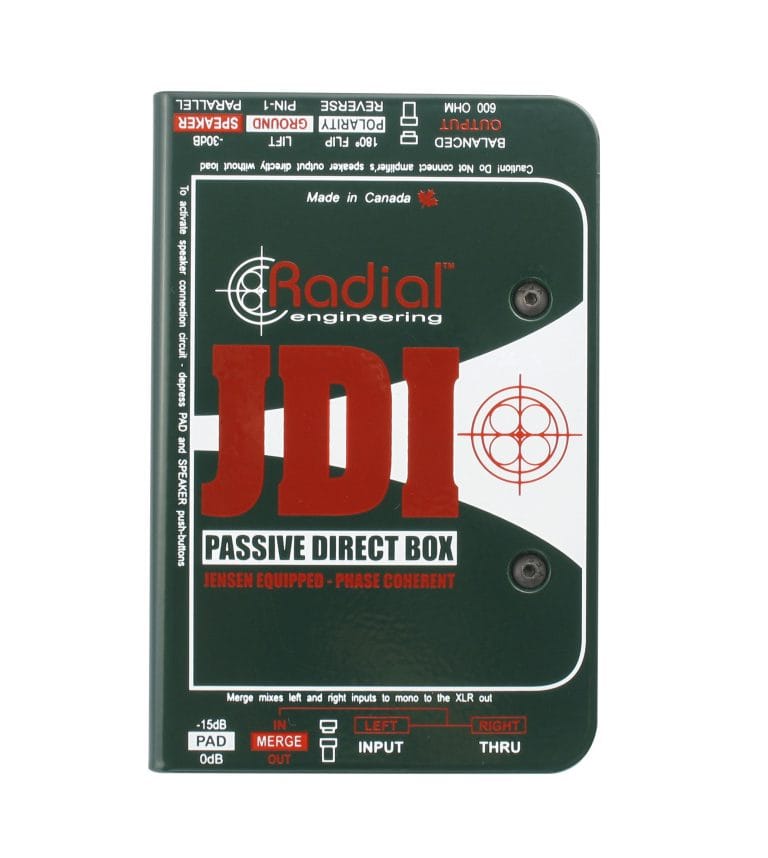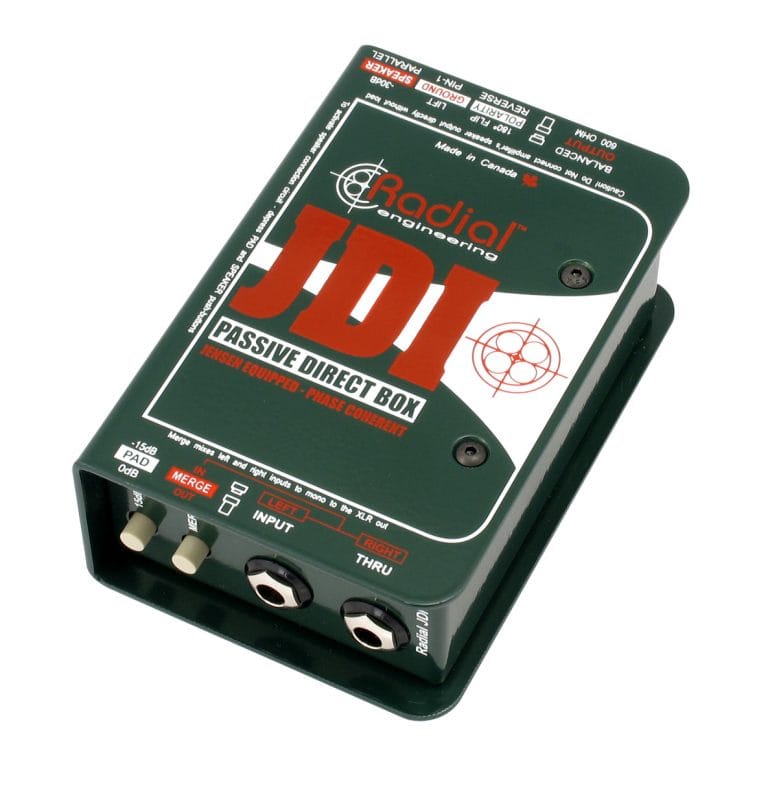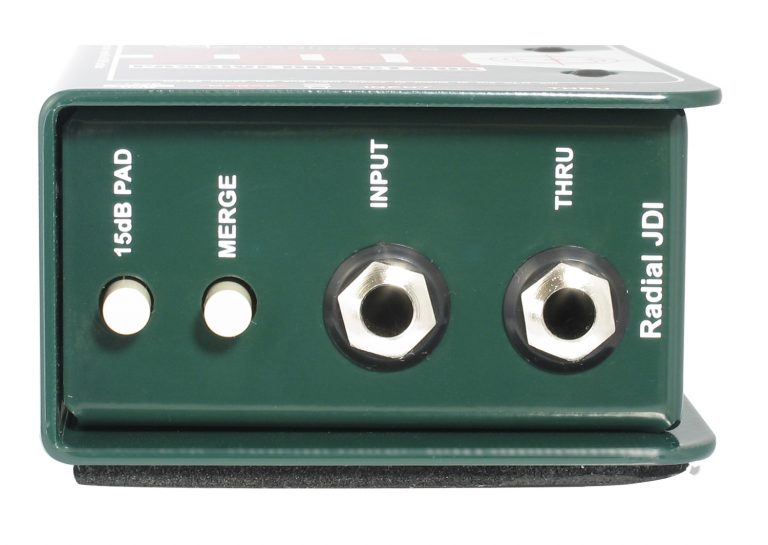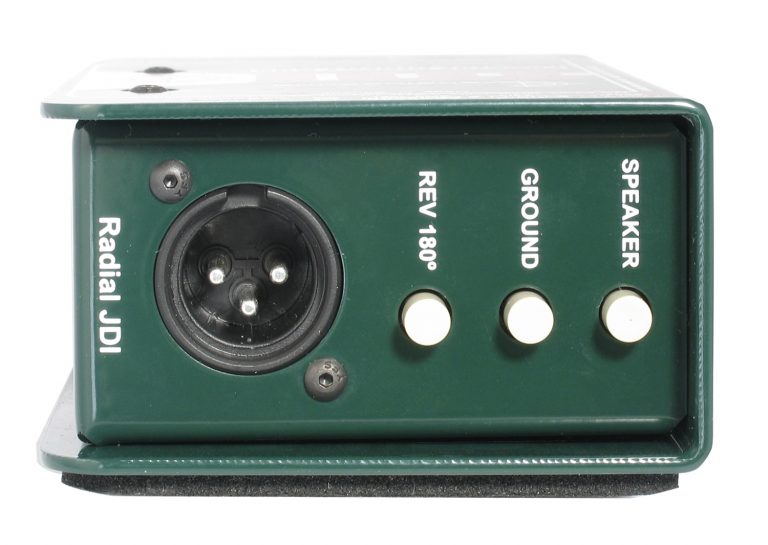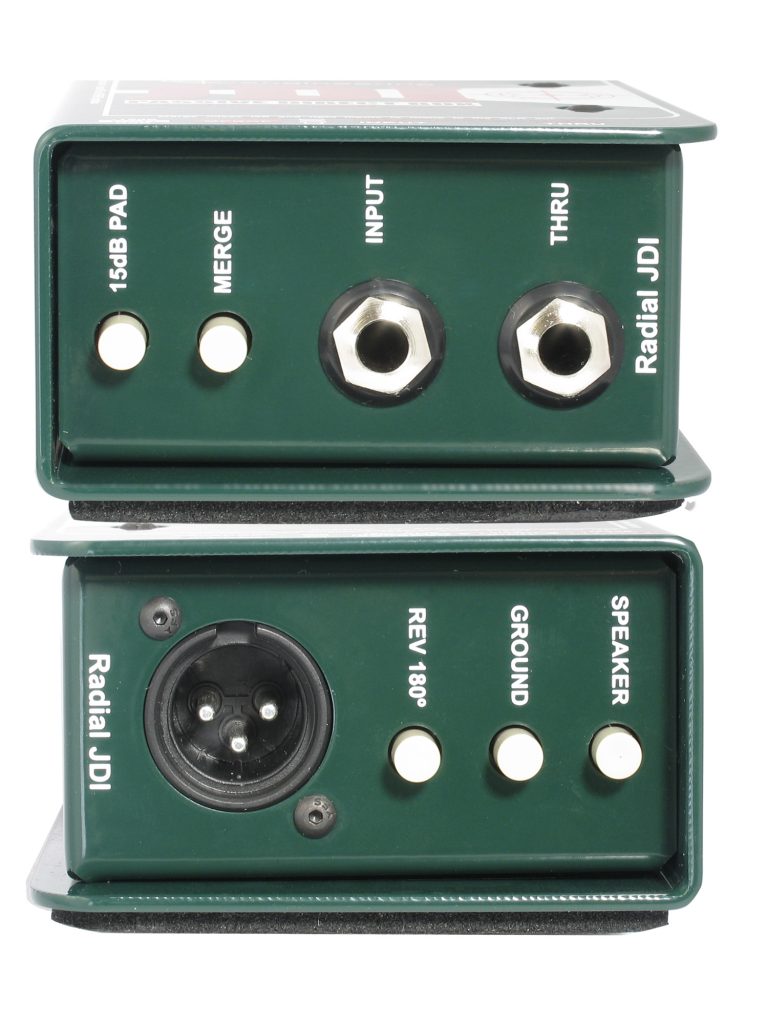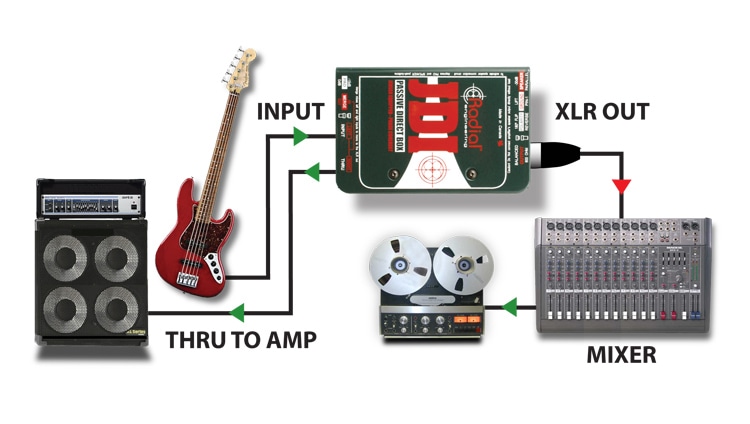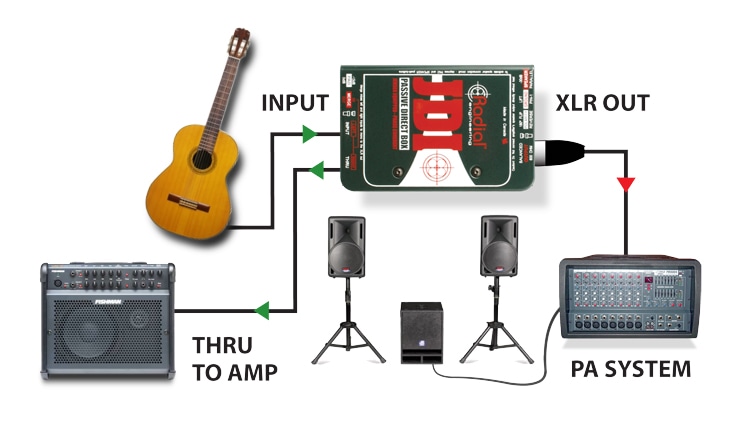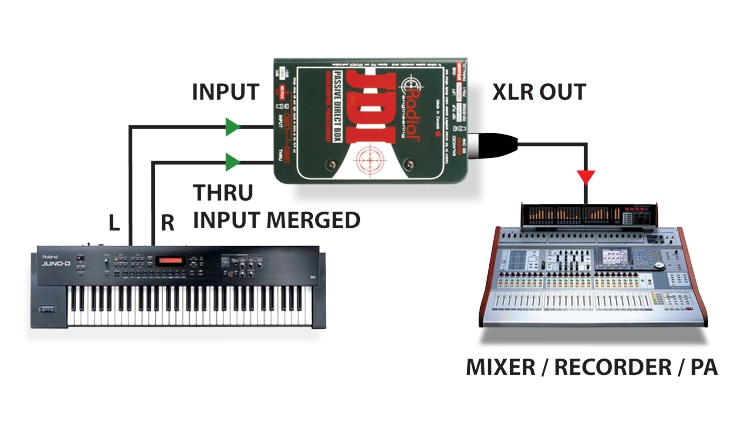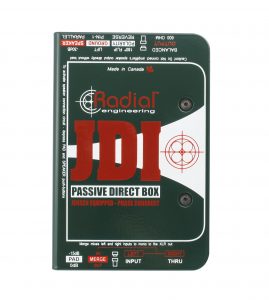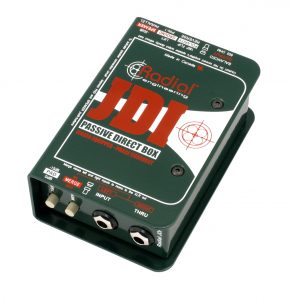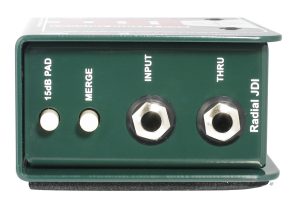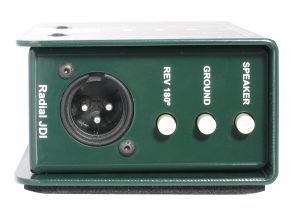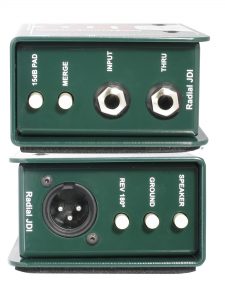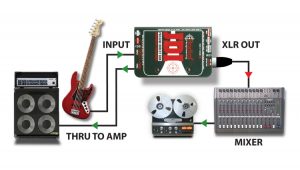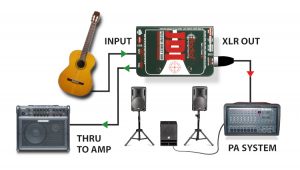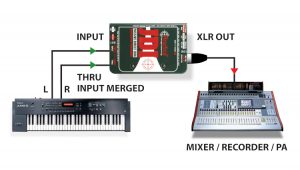If you don't see the question you had in mind here, feel free to enter in the form provided along with your email address so we may send the reply directly to you. Thanks for your participation!
What is a direct box anyway?
A direct box is an impedance matching and signal-balancing device. DIs convert hi-impedance instrument signals to mic-level balanced lines for interface with pro-audio equipment such as mixing consoles. A good direct box will ensure proper electrical signals are maintained throughout the signal chain and allow long cable runs without added noise. A good DI box is just as important as a good microphone.
What is the difference between a passive and an active DI?
Passive direct boxes use a transformer to convert the electrical signals while active direct boxes use an amplifier circuit. Passive boxes have the advantage of providing isolation which can reduce ground hum in systems.
I heard active direct boxes are better?
This can be thought in terms of a dynamic mic compared to a condenser mic. There are good dynamic mics and there are good condenser mics. A good passive direct box depends entirely on the transformer that is being used. For instance, the Radial JDI uses the world’s finest transformer, a Jensen®. These DIs sound fabulous! In fact way better than most active direct boxes.
If the JDI is so good, why should one buy the JDV over the JDI?
It comes down to the application. For keyboards, and simple live set-ups, the JDI is fantastic. No power supply, no batteries to go dead. You just plug it in and it sounds great. The JDV on the other hand will give you more reach. You will enjoy more detail or as Khaliq Glover (engineer for Marcus Miller and Herbie Hancock) said: “The JDV is almost holographic compared to the single dimension of most DIs.”
Why do people use active direct boxes?
Because a good passive direct box requires a good transformer and these are expensive. The Radial JDI uses a Jensen® transformer and these are considered the best in the world. Active boxes can be made for much less money and will generally sound better than a cheap passive box.
So why not simply buy an active direct box?
Active DIs can be good but they can have several disadvantages: First and foremost, active direct boxes require power. This means that they must either run off batteries, phantom power from the console or use a power source like a ‘wall-wart’ or AC/DC supply. When the power is low, they distort. This means that for the direct box to work well, you must keep the batteries at full charge which is impractical if not impossible.
Can I connect a device to the RCA inputs and then use the ¼” inputs as outputs to feed a second device like a thru-put?
This could work but you could encounter noise as there is no way to isolate the two devices. Best solution here would be to test in advance as the equipment being connected will dictate how well this would work.
What about phantom power?
Phantom power is a DC supply that comes from the mixing console. The phantom powered direct box draws its power from the console through the balanced mic cable. The problem is that phantom power is rarely sufficient to properly supply the direct box. This ‘starves’ the amplifier and limits its ability to handle dynamics without distortion. The Radial J48 is a low-power consumption DI that addresses this problem by ensuring maximum available power is diverted to the signal path so that full dynamics may be enjoyed without distortion.
Why use an active direct box at all?
Sound. Some active boxes like the Radial JDV have exceptional sound and a frequency response that is well beyond the norm. Furthermore, when using low output devices such as piezo pickups, these require the added ‘gain’ that an active box can supply. Finally, when using older vintage instruments that have low-output pick-ups, one can encounter a ‘loading’ effect whereby the pickup is not able to drive both the stage amplifier and the 300 feet of cable to the mix position. An active box will not load down the pickup where the passive box may. The JDI is extremely efficient but being passive, can cause loading on these rare occasions.
What else should I look for should I decide to go active?
Probably the most important specification to look for is IMD or inter-modulation distortion. The test beats two dissonant tones together to measure the robustness of the circuit design . This is akin to playing two dissonant notes on a piano. Some pianos when well tuned somehow manage to sound good, while others just plain sound bad. This test is rarely done on direct boxes as most fail miserably. Check out the Mix Magazine
“Seven for the Road” direct box comparative test for more details on IMD.
So I should go active? I’m confused?
No. The decision between active and passive is based on application. If you are using the DI primarily in live situations, we usually recommend the JDI as it is both trouble free and is adaptable to a wide range of applications. Today, most bass guitars have extremely powerful pick-ups or have built-in active circuits. Acoustics are the same. Keyboards have tons of gain. And who dares to use a vintage 1955 Pre-bass live anymore.
What makes the JDI better than the rest?
A good direct box needs to address several facets to be functional: The sound, the feature-set and construction are all essential parts that make up the whole.
Let’s start with the construction. The JDI is in fact two boxes in one. The inner skeleton features a 14-gauge welded construction in which the PC board, circuit, transformer and switches are housed. Lift up the JDI and you know you are dealing with quality. The rigid design ensures that there will not be any stress on the PC board (mil spec 2-sided) and the solder joints will remain intact even after years of use. The outer book-end design provides easy access to the connectors while creating a protective zone for the switches. In the real world of touring, DI boxes are stepped on & abused. Radial DIs must be able to stand up to the abuse.
As for feature set, we know of no other DI box that offers as many features. This makes the JDI practical in pretty much any application. Finally, the sound. Check out the specifications and you will find that it is extremely linear from 20Hz to 20kHz, it exhibits almost no distortion in the most rigorous and demanding 20Hz region and with virtually zero-phase distortion throughout the audio bandwidth, what you put in – you get out. Nothing added, nothing changed.
Can I plug a balanced ¼” TRS connector into the unbalanced ¼” input of a Radial DI box?
The DI will simply derive the signal and treat it as if unbalanced by taking the + signal only. This will decrease the input level slightly which is easily compensated by increasing the output level from source.
Can I connect the JDI between the head and cabinet instead of using the speaker parallel jack?
No. This is not advised as the signal traces in the JDI are not suitable for high levels. You can however use the parallel speaker output from the amp so long as a speaker is connected.
How does the merge function work?
The merge is a passive resistive mix circuit that sums two input channels to mono. In other words, it takes the left and right outputs from a keyboard and mixes them together using the in and thru connections on the DI box.
When plugging my pedal board straight into a PA system, there is lots of hum and buzz. Will the JDI help reduce the problem?
Yes, it should. The JDI will properly convert the instrument level signal to microphone level for the sound board, and the transformer inside will block any DC hum that may be present at the output of your pedals. It also features a ground-lift switch if problems persist.
Which passive DI box would you recommend for recording an Archtop Guitar with stock Gibson humbuckers?
The JDI is our best passive direct box and will sound fabulous with your jazz guitar.
Will 48V DC phantom power harm the JDI?
No. The transformers will block the DC without any concern.

